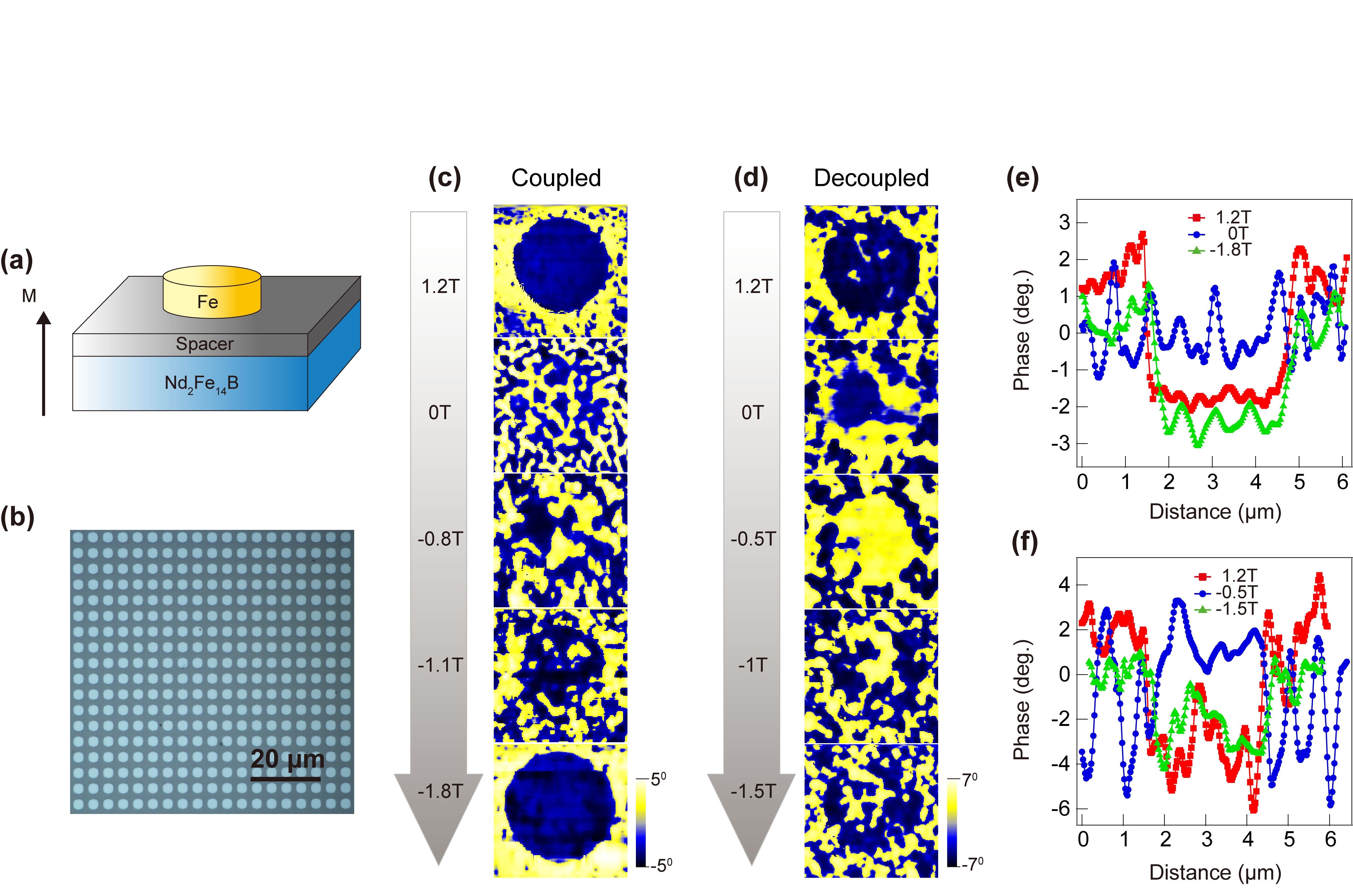
Magnetization reversal and magnetic interactions in anisotropic Nd-Dy-Fe-Co-B/MgO/¦Á-Fe disks and multilayers |
|
We report on field induced domain evolutionary procedure in the anisotropic Nd-Dy-Fe-Co-B/MgO/Fe multilayers by using the First-Order-Reversal-Curves and the magnetic force microscopy. Different reversal behaviors and domain sizes are found in the well coupled and decoupled multilayers by changing the thickness of spacer layer. The competition between dipolar magnetostatic energy and Zeeman energy is evaluated by in-field observation throughout nucleation and annihilation processes. In addition, lithography-patterned arrays of soft Fe disks onto continuous Nd-Dy-Fe-Co-B hard-magnetic layer are designed. By descending the applied field, it is found that magnetization orientations of the Fe disk and Nd-Dy-Fe-Co-B layer are aligned parallel. In decoupled disk, although the out-of-plane magnetization orientations are observed, the orientation of the domains in Fe disk is random. Furthermore, it is found that a stronger anisotropy of Nd-Dy-Fe-Co-B layer decreases the interaction length. Our results provide new understanding of the anisotropic nanocomposite magnets with long-ranged magnetic interactions. Fig. The MFM images of the micron-size SM disk. (a) Schematic illustration of lithography-patterned arrays of soft Fe disks onto continuous Nd-Dy-Fe-Co-B hard-magnetic layer, and the well-coupled and decoupled structures are tuned by inserting a critical thickness of spacer layer. (b) Optical image of the disks array prepared by lithography technology. (c) and (d) The in-field MFM images of the well-coupled and decoupled disks, respectively. (e) and (f) Line profiles extracted from MFM images shown in (c) and (d), respectively. |
|
